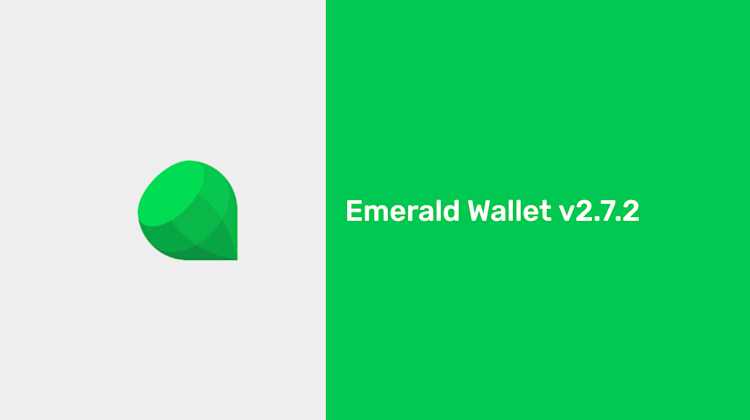Educational post: What cold wallet setups may be used with Emerald.
You can watch this educational content here:
In the following sections, we will explain what is a cold wallet, how Emerald may be set up as a cold wallet, and how other cold wallet setups in combination with Emerald may be used with hardware wallets and paper wallets.
1. What is a cold wallet?
First, let's start by refreshing the concept of what is a cold wallet.

A cold wallet is when a private key associated to an address in the blockchain is separated from the regular computer and phone that a user or business uses regularly. When the private key is inside the machines and wallet apps that people regularly use and are available to transact on a daily basis, that is called "hot wallet".
Cold wallets are also hardly ever connected to the internet and hardly ever used to send transactions. They are just for holding crypto assets in the safest way possible.
2. Emerald as a cold wallet
A way to use Emerald as a cold wallet would be to get another machine, which we may call a "cold machine", and install a separate Emerald Wallet there.
In this setup, we would have one Emerald installation in the hot machines, the ones that are used regularly and are constantly connected to the internet, and another installation in a separate cold machine.

The cold machine should hardly ever be connected to the internet, so it can't be hacked; should be separated from the machines of regular use; and the private keys in that installation should be hardly ever used to send transactions to the blockchain over the internet.
Note that the hot wallet setup also has private keys, but these are available for day to day transactions only.
People and businesses usually have between 10% to 20% of they crypto in hot wallets. In cold wallets, because they are to keep crypto as safe as possible, people and businesses may have 80% to 90% of their capital or savings.
The way to move crypto between the cold and hot environments would be by moving money from the cold wallet to the hot wallet, by connecting the cold machine to the internet only for that movement and then disconnecting it, and then transacting on a daily basis from the hot wallet.
To move any surplus from the hot environment to the cold wallet, it is always preferable to move it back to a new address that has never been used in the cold wallet. For this, Emerald enables users to create new addresses whenever they want in the blockchains we support.
3. Emerald with hardware wallets
Another way of setting up hot and cold environments with Emerald would be by using a USB drive or hardware wallet that may be paired with an Emerald hot wallet.

In this way, users or businesses may have their hot private keys in the day to day use machines and their cold private keys in the hardware wallets.
All the same conditions and measures to manage the cold and hot wallets are the same as described in the previous section.
To enable hardware wallets, Emerald supports Ledger Nano S and X and will add support to more brands.
4. Emerald with paper wallets
Because many people consider paper wallets as the safest form of keeping cold private keys, this is also a way that may be used in combination with an Emerald hot wallet to manage crypto assets.

In this setup, users or businesses may send their savings or capital that they will not use for a long time to their paper wallet addresses and keep them in a safe place. Separately, they can keep using Emerald in their hot environments.
In the same way as before, people may also move crypto back and forth from their hot and cold wallets with the same policies as with hardware wallets or keeping a separate cold machine with a separate Emerald installation.
5. Other considerations
5.1. Multisignature setups: As the concept of cold wallets is a security concern, there are other ways of keeping crypto assets safe, but using multisignature wallets instead of cold wallets, or a combination of both. In a future educational post we will explain these setups that Emerald will support soon.
5.2. The convenience tradeoff: It is important to note that there is a security vs convenience tradeoff when using cold wallets. This is because it requires more steps to transact with cold wallets, and hot wallets are really convenient because they are always available to transact.
5.3. The cost tradeoff: With cold wallets (and with multisignature setups) there is a cost vs security tradeoff as well. This is because cold wallets may require more machines and people (especially in the case of businesses) to manage, which is more costly but at the same time increasing the security of the crypto assets held.
5.4. Privacy: The issue of not using cold wallets twice is not only related to security, but also to privacy. When users and businesses receive crypto in different addresses that they hardly ever use, this makes it more difficult to track who owns them. We will also explain this concept further in a future educational post.
Thank you for reading this educational post!
Please remember to download Emerald here:



